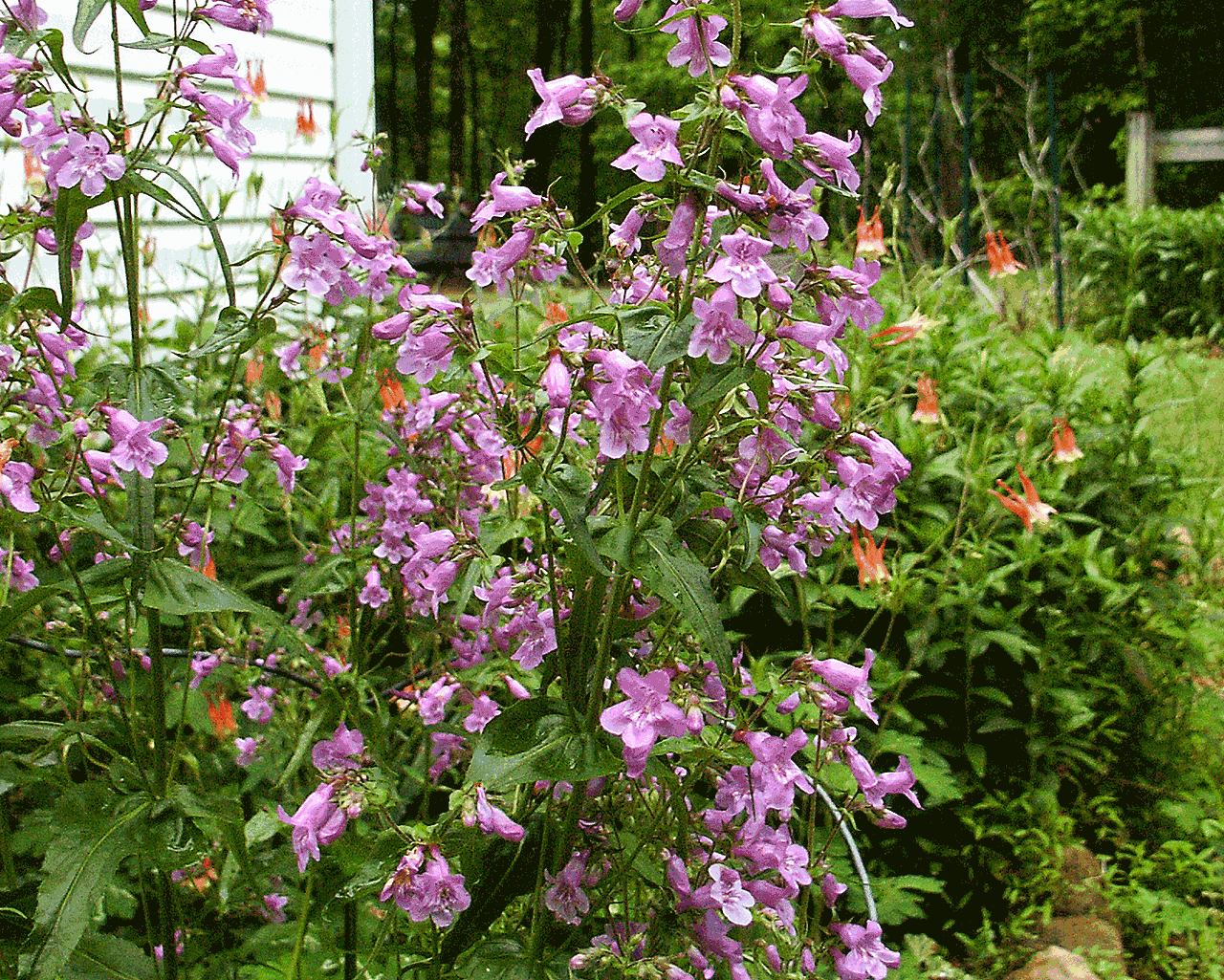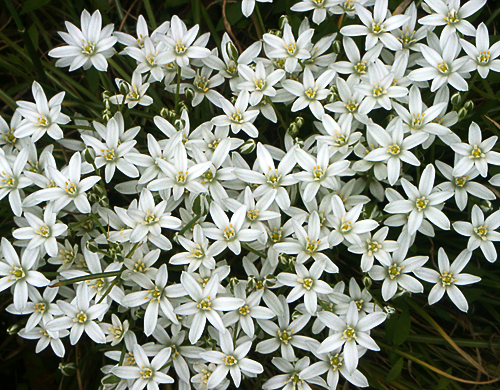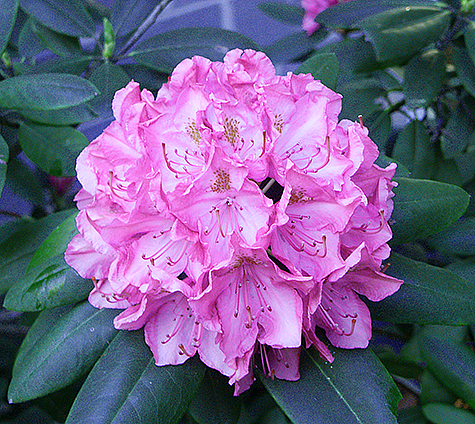Weekend Project, a New Bed
The weekend found me busy between working on the side garden and constructing a new bed around the front garden Angel's Trumpet. With the cold winter we experienced last year, I was concerned the Angel's Trumpet might not have survived. However, I saw that it was sending up new growth and decided to move ahead with constructing the new bed around it.
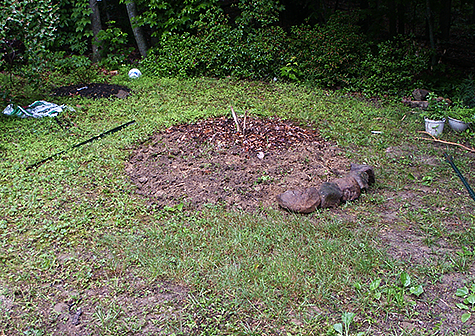
The soil in that area of the front garden is heavy clay, so I knew that plenty of organic matter would be needed to loosen the soil. I decided to loosen the soil first; establishing the size of the bed, and then construct the border. The border would be constructed from the same material as the borders for the other flower beds in my gardens; the natural stone found on the property
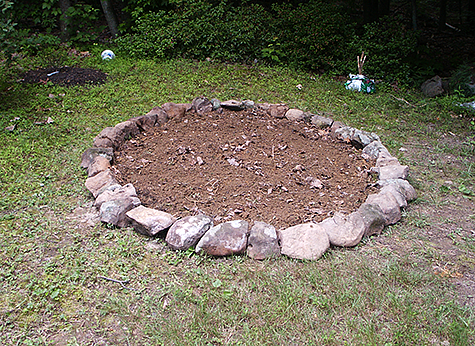
The finished bed is a rough oval shape about 2 metres (7 feet) by 3 metres (9 feet). I removed the Angel's Trumpet from the bed so I could work the organic matter into the clay soil without worrying about damaging the plant.
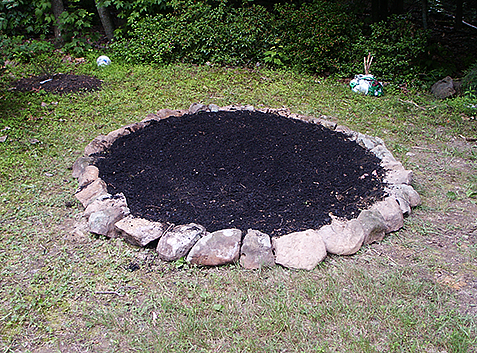
Once I had the organic matter worked into the clay soil, I replanted the Angel's Trumpet. Angel's Trumpet are not small plants; mine reached a height of 2 meters (7 feet). I placed the Angel's Trumpet at the furthest end of the bed and left plenty of room between it and the other plants I placed in the bed.
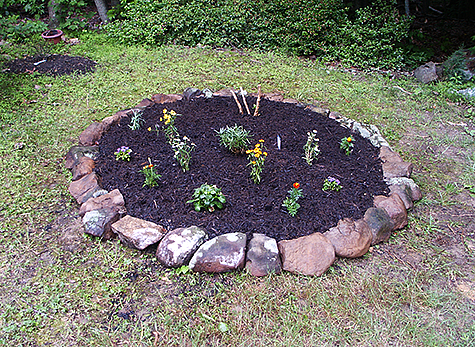
Once the Angel's Trumpet was back in place, I planted some annuals that I yet to place in any of the beds. At a small local vendor, I found a four pack tray of what was clearly a type of daisy; however, there was no sticker indicating the name of the plant. I enquired of the shopkeeper about the plant, but she could not remember and told me she would try to find out and let me know the next time I stopped by. Unfortunately, I have not been back to the shop in weeks and she has probably forgotten by now.
I was quite happy with the new bed; it is visible from the dinning area window and it is nice to be able to look out any window in the house and be able to view flowers in my gardens. The largest amount of time spent on the construction of the bed was in searching for the stones and transporting them to the site. Otherwise, the project is fairly quick to build. I also spent part of the weekend working on the side garden finishing the border and mulching.
